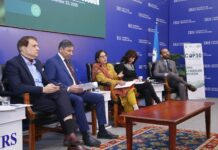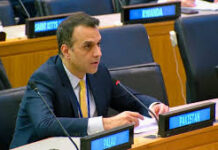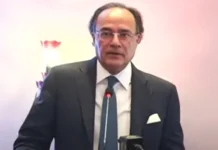BY Uneeza Saeed
Climate change is no longer abstract
Climate change is no longer abstract, it is rewriting Pakistan’s public health narrative with stark urgency. The 2025 monsoon floods have claimed over 831 lives and affected millions.
According to Politico, In Punjab alone, nearly two million residents from over 8,000 villages were uprooted, and more than one million acres of farmland devastated.
These conditions triggered disease outbreaks: cholera, malaria, diarrhea, and skin infections are surging in camps where clean water and sanitation are scarce.
“The lurking threat of an outbreak can kill more people than floods did” cautioned Dr. Abdul Ghafoor Shoro of the Pakistan Medical Association. His warning underscores the grave danger posed by these disasters.
This crisis extends beyond immediate illness. UNICEF’s 2025 report reveals that acute malnutrition has soared to 17.7 percent nationwide, with six percent of children severely wasted.
These levels are well above emergency thresholds. Over 10 million people are now facing crisis level food insecurity. Meanwhile, the World Bank projects that climate pressures could slash staple crop yields by nearly 20 percent by the 2060s, threatening food security especially in Sindh and Balochistan.
Every flood not only displaces lives, it deepens a cycle of hunger and long-term vulnerability.
Pakistan’s reliance on relief without resilience is no longer viable. We must embed innovation within the health system. Mobile health units with telemedicine could deliver care to isolated, flood affected areas.
Predictive analytics and AI-driven early warning systems can help pre-position medical supplies before disaster strikes.
Climate smart nutrition programs, focused on fortified foods and locally grown nutrient rich crops, can soften malnutrition spikes. Such measures are no longer optional, they are lifelines.
This urgency is echoed by leading experts. Karachi based ecologist Rafi-ul-Haq asserts that floods “are becoming routine shocks,” describing the “new normal” as no exaggeration and urging that “Pakistan cannot stop the rain, but it can prevent much of the suffering by fixing manmade vulnerabilities” (Anadolu).
Maternal and child health expert Professor Zulfiqar Bhutta warns that climate change is already stunting growth, causing shorter heights and developmental damage among children, calling for a multifaceted response involving policymakers, healthcare professionals, and communities (APP via The Nation).
Climate scientist Jakob Steiner from the University of Graz notes that many extreme events happening in 2025 were expected only by 2050, emphasizing how rapidly climate driven threats are unfolding.
Global studies reinforce the urgency: analysis by the World Weather Attribution group shows the floods in July-August 2025 were driven by 10–15 percent heavier monsoon rains due to human induced climate change.
With Pakistan contributing less than one percent of global emissions yet experiencing disproportionate impacts, the moral case for climate justice and bold adaptation is overwhelming.
The cost of inaction is devastating. Malnourished children face injury to lifelong development. Displaced families lose access to vital medical and psychiatric care, compounding trauma.
Globally, the WHO warns that climate induced diseases including malnutrition, heat stress, malaria, and diarrheal diseases could result in an additional 250,000 deaths annually by 2030, with 33,000 child deaths from diarrhea each year by 2050.
For Pakistan, resilience is existential. The nation must shift from reactive relief to anticipatory adaptation, building partnerships to deliver telemedicine, strengthen supply chains, and harness climate financing that boosts long-term capacity, not debt.
Women and children, often most vulnerable, must be central to these responses.
The floods of 2025 are not anomalies, they’re harbingers. Pakistan cannot afford to wait for the next disaster before acting.
Let us respond not with sympathy alone, but with systemic, forward looking resilience. The question is no longer whether we can afford to invest in resilience but whether we can afford not to.






